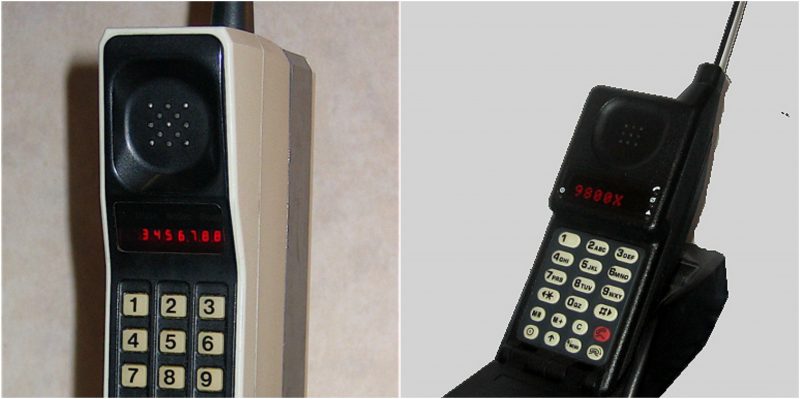Today, many of us couldn’t imagine our lives without mobile phones. They come in all shapes and sizes, with multiple features designed to satisfy our daily needs for communication and socialization, as well as a multitude of others. With all the additional services modern mobile phones offer, a question arises as to whether “phone” is an adequate term to describe these devices, after all, dialing and calling is only one of the many functions that these devices have.
The human need for communication over long distances has existed since the beginning of civilization, but until very recently there were no efficient, quick, and convenient ways of doing this. The idea of a phone that can be carried in one’s pocket has been around since the early 19th century, being conceived shortly after Alexander Graham Bell patented the telephone.
In fiction, one of the first depictions of a device reminiscent of modern mobile phones was made in the 1948 science fiction novel “Space Cadet” by Robert Heinlein. Here, the protagonist, who has just traveled to Colorado from his home in Des Moines, receives a call from his father on a pocket telephone. He is headed to space, and before he starts the voyage he decides to ship the phone home because its short range won’t be useful there.
Another famous writer imagined that one day we would be communicating with these sorts of gadgets: Ten years after Heinlein, Arthur C. Clarke imagined a device that he called a “personal transceiver”, something “so small and compact that every man carries one”. According to Clarke, such a device would also include global positioning so that “no one need ever again be lost”. In his book “Profiles of the Future,” the amazing Clarke even predicted that this kind of technology would appear in the mid-1980s. It turned out he was right!
In reality, the origins of mobile phone technology can be traced back to The Second World War. The military back then used radiotelephone links for communication on the battlefield. Since the 1940s, hand-held radio transceivers were available. Soon, the legendary company Bell Labs began to work on a mobile telephone system wich allowed users to place and receive telephone calls from cars. In 1946 companies such as AT&T started to offer “Mobile Telephone Service.” These services had a very limited coverage and were only available in urban areas.
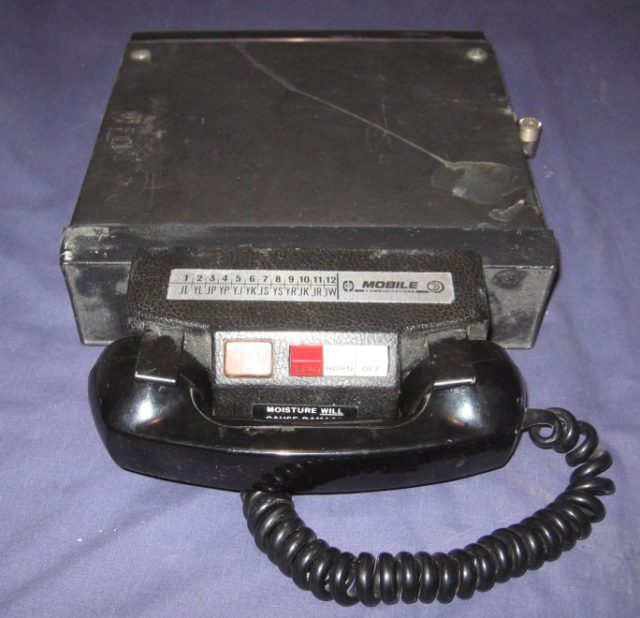
Later, from 1957 to 1961, a Soviet engineer called Leonid Kupriyanovich worked on several experimental models of small, handheld mobile phones; one of these models weighed only 70 grams. Unfortunately, the USSR decided to stop funding the development of this technology.
Twenty years after the initial research (1947) was made by Bell Labs, a group of younger Bell Labs engineers would lay the foundations for today’s cellular network an phones. Richard H. Frenkiel, Joel S. Engel, and Philip T. Porter of Bell devised a plan for a network of antennas that would be able to accept signals across bigger distances. The last piece of this puzzle was the antenna on the mobile phone itself.
Soon after this innovation was made, Motorola became the first company to produce a “reliable” handheld mobile phone device.
This technology changed our lifestyle in so many ways. Since the 1970s, the design of the mobile phone has changed a lot. They didn’t always look so smooth and sophisticated as the ones we have today, but still, over the years they played a significant part in changing the world and bringing it closer to the future. Here are some of the cell phones that were crucial for the evolution of this technology.
Motorola DynaTAC 8000X (1973)
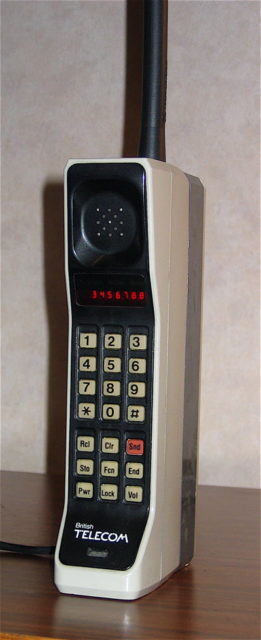
On the 3rd of April 1973, using this device, Motorola researcher Martin Cooper made the first mobile telephone call to Dr. Joel S. Engel of Bell Labs. The DynaTAC 8000X was the first commercial mobile phone! Its initial price was a hefty $4,000. The phone went on sale in 1983 and the first mobile phone call in the UK was made in 1985. Michael Harrison called the chairman of Vodafone, and his father, Sir Ernest Harrison.
Motorola MicroTAC 9800X (1989)
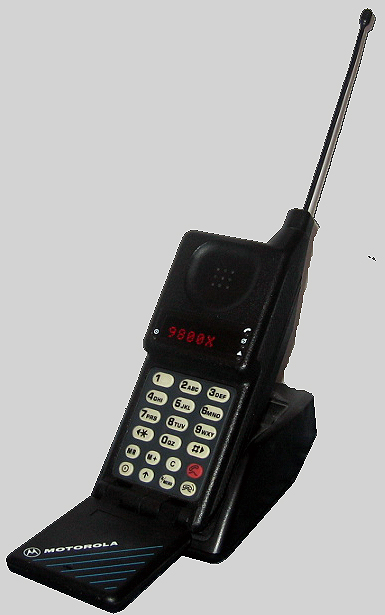
In 1989, this was the smallest mobile phone that money could buy. It was also the first to introduce the “flip” design, where the mouthpiece folded over the keypad. Although it had a big antenna, the thing wasn’t functional; it was there just for the looks…
Motorola International 3200 (1992)
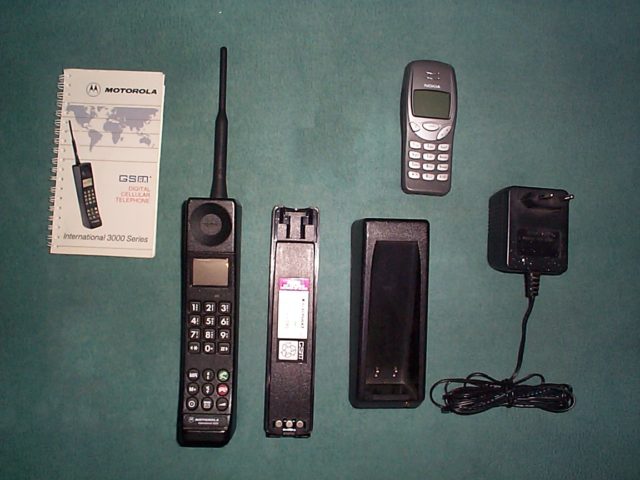
This Motorola model was the first digital hand-sized mobile telephone ever made. It was severely limited in what information it could show due to the small dot matrix LCD.
Nokia 1011 (1992)
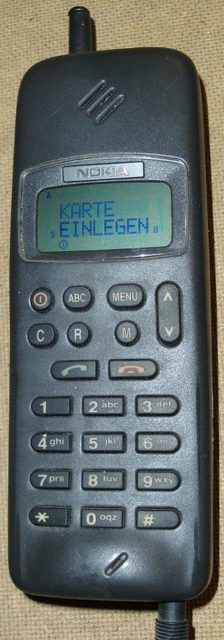
The Nokia 1011 was another benchmark in the development of the mobile phone technology; it was the first mass-produced phone with GSM (Global System for Mobile Communications) capabilities. Its initial price in the UK was £234.
IBM Simon (1994)
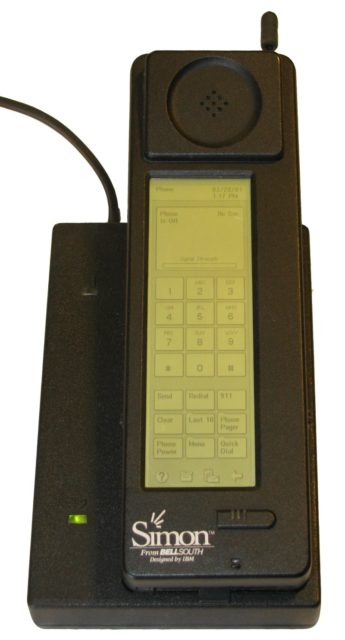
The first phone with a Touchscreen and applications! The IBM Simon was operated with a stylus, and it was only available in the USA, for the price of $899.
Nokia 9110 Communicator (1996)
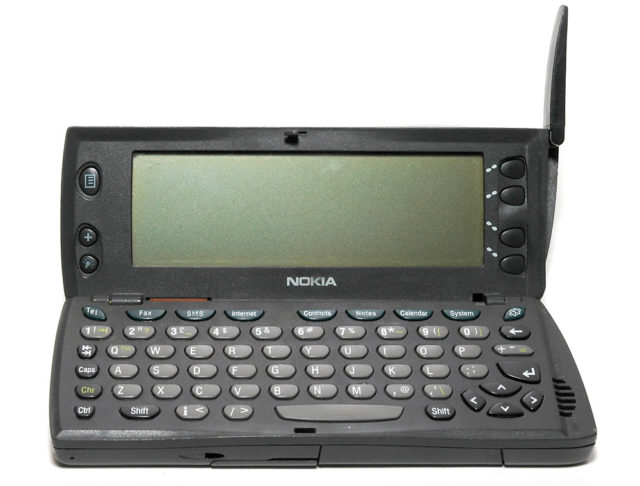
On the outside, the Nokia Communicator looked just like an ordinary phone, but once you opened it a keyboard and a big LCD screen was revealed. Among other features, this mobile phone had some basic internet connectivity.
Motorola StarTAC (1996)
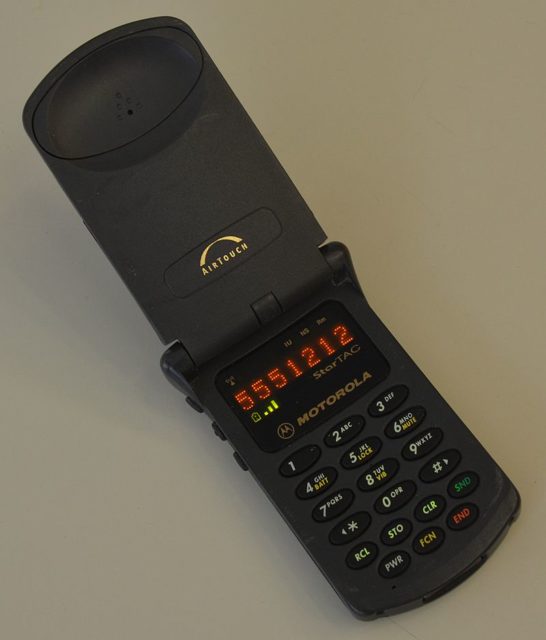
The Motorola StarTAC was the first phone to introduce the iconic clamshell/flip mechanism. PC World magazine ranked the StarTAC at the 6th place in its 50 Greatest Gadgets of the Past 50 Years.
Nokia 8110 (1996)
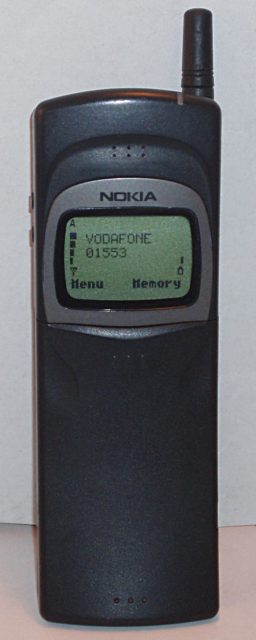
The same year when Motorola released the StarTAC, Nokia released its Nokia 8110. It is the first example of a ‘slider’ phone. A protective cover could be extended to reveal the keypad. If it looks familiar, it’s because Keanu Reeves uses one in The Matrix…
Ericsson R380
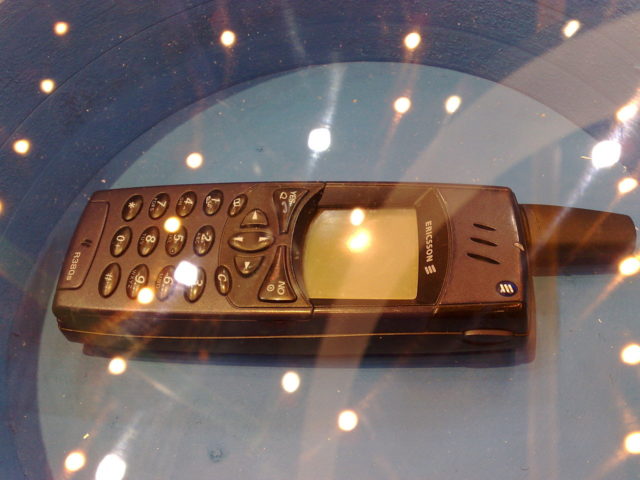
A combination of a mobile phone and a personal digital assistant (PDA), the R380 was the first mobile phone to be marketed as a “smartphone”. It was also the first phone that used the groundbreaking Symbian OS. It had a black and white touchscreen, partially covered by a flip panel.
Nokia 3310
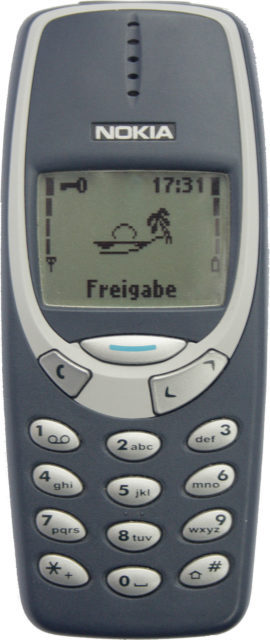
And last but not least, the phone that enjoys a cult status today. This legendary phone helped Nokia to dominate the mobile phone market for a long time. It is famous for its durability and long-lasting battery. Nokia sold more than 126 million units worldwide, so it’s easy to see why the 3310 is considered to be one of the most successful phones in history.
